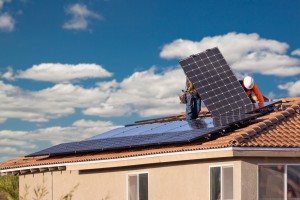The Scottish government said that with the support of industry manufacturers, it has committed to install 4GW to 6GW of photovoltaic systems by 2030. According to a paper published by the Scottish Government, this commitment is dependent on large-scale PV projects delivering the right level of economic and community benefits.
Scottish Renewables, a major renewable energy lobby group in Scotland, said in a press release that it welcomed the news, and that the target will be included in the Scottish Government’s upcoming Energy Strategy and Just transition plan.
Helen Melone, senior policy manager at Scottish Renewables, said in her press release that this commitment from the Scottish Government is a goal that the association has long called for. But she added that the Scottish government must set out a clear plan with key milestones on how to achieve them.
This plan should cover targets for commercial solar rooftop PV systems, residential rooftop PV systems, as well as ground mounted pv system, and it must ensure that Scotland’s public sector fully utilises the PV potential of its buildings by 2030, she said.
In January, the Scottish Government published its Draft Energy Strategy and Just Transition Plan, a roadmap for the country to achieve its climate change ambitions. According to the draft plan, the final version is expected to be released in 2023. Industry media have asked when the Scottish government will publish its final plans, but have yet to receive a response.
The draft policy states that the Scottish Government wants to meet its target of installing 20GW of low-cost renewable energy generation by 2030. But unlike other renewable energy sources such as onshore wind, it does not include specific PV installation targets. The draft foreshadows that the final version will have these PV system-specific milestones.
According to figures released by Scottish Renewables, the cumulative installed onshore wind capacity in Scotland stood at 9GW up to the first quarter of 2023, accounting for more than half of the total cumulative installed renewables capacity of 14GW. The installed BIPV system has the lowest installed capacity, only 522MW.
However, the Scottish Government’s draft Energy Strategy and Transition Plan indicate a willingness to increase the installed capacity of photovoltaic systems.
“We see a strong role for PV systems and for home and commercial PV systems combined with battery storage systems, which have the potential to help reduce consumers’ electricity bills,” the Scottish government said in the draft.
The draft document says the Scottish Government’s Climate Emergency Skills Action Plan 2020-2025 sets out a framework for creating and supporting a workforce in the photovoltaic sector. According to reports, there is a skills gap in the PV industry workforce in terms of installation and maintenance. The draft also mentions the goal it has set to provide preferential policies for equipment used in renewable energy generation facilities and energy storage systems from April 2023 to March 2035.
Post time: Nov-03-2023
